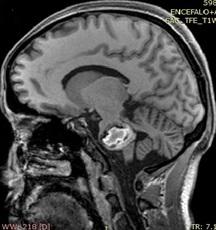Usted está aquí
Peruvian Journal of Neurosurgery
Microsurgical resection of a pontine cavernoma through a far lateral infratentorial supracerebellar approach
CARLOS VASQUEZ P., GONZALO ROJAS D., JOSÉ CALDERÓN S., YELIMER CAUCHA M.
Abstract (Spanish) ||
Full Text ||
PDF (Spanish) ||
PDF (English)
ABSTRACT
Introduction: Cavernomas on the posterolateral pontomesencephalic surface can be approached from an extreme lateral supracerebellar infratentorial corridor, although the theory is scarce. The brainstem has a dense concentration of nuclei and fibers that are responsible for a high rate of morbidity when treating brainstem lesions. The objective of this work is to demonstrate the safe microsurgical resection technique for the complete removal of a pontine cavernoma.
Clinical Case: 27-year-old woman with a 5-month history of disease; characterized by headache, left facial paresis, and right half body paresis. Magnetic resonance imaging (MRI) showed a hemorrhage in the middle cerebellar peduncle compatible with a ruptured cavernoma, initially receiving medical treatment. Subsequently, due to an increase in the motor deficit and the presence of keratopathy in the left eye, surgery was decided. A retromastoid craniotomy and an extreme lateral supracerebellar infratentorial approach were performed. A safe entry zone was identified and the cavernoma was completely excised. In the postoperative period, she did not present additional neurological deficit, being extubated at 24 hours, with a score on the Glasgow scale of 15 points. Postoperative brain tomography (CT) showed the absence of the cavernoma.
Conclusion: The far lateral supracerebellar infratentorial approach is safe for the excision of cavernomas with a middle cerebellar peduncle. When combined with the significant reverse Trendelenburg position it results in minimal cerebellar retraction as the cerebellum descends with gravity.
Keywords: Hemangioma, Cavernous, Pons, Middle Cerebellar Peduncle, Craniotomy (source: MeSH NLM)



